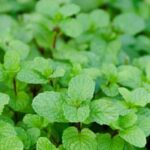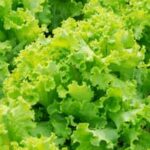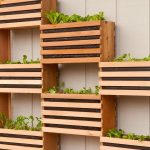Are you interested in growing your own vegetables but don’t have space for a traditional garden? If so, container gardening for vegetables is a great option to explore.
In this article, we will provide you with ideas for creating a thriving container garden, from choosing the right containers and selecting the best vegetables to harvesting and troubleshooting common issues. Whether you have limited outdoor space or simply want to add greenery to your patio or balcony, container gardening is an excellent way to grow fresh produce at home.
When it comes to container gardening for vegetables, there are plenty of creative and practical ideas to consider. From using recycled materials to investing in decorative pots, there are various options for adding visual interest to your outdoor space while growing your own food.
Additionally, there are specific tips and tricks that can help ensure the success of your container garden, such as proper maintenance and care techniques. In this article, we’ll cover all aspects of container gardening for vegetables, so you can create a thriving garden no matter how limited your space may be.
Whether you’re a novice gardener or have years of experience under your belt, everyone can benefit from learning about the ins and outs of container gardening for vegetables. By following our comprehensive guide, you’ll be on your way to enjoying a bountiful harvest of fresh produce grown right in your own backyard or balcony.
So let’s get started with exploring the world of container gardening for vegetables and find out how you can turn even the smallest outdoor space into a flourishing garden.
Choosing the Right Containers for Your Vegetable Garden
When it comes to container gardening for vegetables, choosing the right containers is crucial for the success of your garden. The first consideration when selecting containers for your vegetable garden is size. Make sure that the containers you choose are large enough to accommodate the root systems of the vegetables you plan to grow. This will ensure that they have enough space to grow and thrive.
In addition to size, it’s important to consider the material of the containers. While plastic, terra cotta, and wood are all popular choices for vegetable containers, it’s essential to select a material that provides adequate drainage to prevent waterlogged soil. Some gardeners also prefer containers with handles or wheels for ease of movement and maintenance.
Furthermore, pay attention to the location and climate in which your container garden will be placed. If your garden will be located in a particularly windy area, it may be beneficial to choose heavier containers or secure them in place to prevent tipping over. Similarly, if you live in a hot climate, light-colored containers may help keep the soil temperature cooler for your vegetables.
Ultimately, choosing the right containers for your vegetable garden requires thoughtful consideration of size, material, and environmental factors. By taking these elements into account, you can set your container garden up for success and create an optimal environment for growing healthy and thriving vegetables.
Selecting the Best Vegetables for Container Gardening
When it comes to container gardening for vegetables, selecting the right vegetables to grow in your containers is crucial for a successful harvest. Certain vegetables are better suited for container gardening than others due to their size, growth habits, and adaptability to limited space. Here are some of the best vegetables for container gardening ideas that you can consider for your own garden:
Tomatoes
Tomatoes are a popular choice for container gardening due to their versatility and abundant yield. Compact or dwarf varieties such as cherry tomatoes or patio tomatoes are best suited for containers, as they require less space and provide a continuous harvest throughout the growing season.
Peppers
Peppers thrive in containers and can add a colorful and flavorful addition to your vegetable garden. Varieties such as bell peppers, banana peppers, or jalapenos are excellent choices for container gardening, as they can adapt well to limited space and produce high yields with proper care.
Salad Greens
Lettuce, spinach, arugula, and other salad greens are perfect for container gardening, especially if you enjoy fresh salads throughout the growing season. These fast-growing vegetables do well in shallow containers and can be continuously harvested by cutting outer leaves, making them an ideal choice for small spaces.
When selecting vegetables for your container garden, be sure to consider the specific requirements of each plant such as sunlight, water, and nutrients. By choosing the right vegetables for your containers, you can enjoy a bountiful harvest even in limited space.
Tips for Successful Container Gardening
When it comes to container gardening for vegetables, there are a few tips and tricks that can help ensure your success. Whether you’re new to gardening or just looking to up your game, these tips for successful container gardening will have you on the path to a bountiful harvest in no time.
Here Are Some Key Tips for Successful Container Gardening
- Choose the right soil: Using high-quality potting mix is essential for container gardening success. Look for a mix specifically formulated for containers, as it will provide the proper drainage and aeration that your vegetables need to thrive.
- Water consistently: Vegetables grown in containers can dry out more quickly than those in the ground, so it’s important to water consistently. Check your plants daily, especially during hot weather, and adjust your watering schedule as needed.
- Provide adequate sunlight: Most vegetable plants require at least six hours of sunlight per day, so be sure to place your containers in a sunny location. If you’re limited on space or sun exposure, consider using reflective materials or strategically placing mirrors to maximize sunlight.
Add These Tips When Planning Your Container Garden
- Fertilize regularly: Container-grown vegetables will benefit from regular fertilization since nutrients can quickly leach out of the potting mix. Use a balanced fertilizer according to package instructions as part of your routine care.
- Monitor for pests and diseases: Keep an eye out for common pests like aphids and caterpillars, as well as signs of disease such as wilting or discoloration. Consider using natural pest control methods and properly disposing of any affected plants to prevent spread.
- Adequate spacing: When planting vegetables in containers, be mindful of their mature size and give them enough space to grow without overcrowding. This will promote healthy growth and prevent competition for resources among your plants.
Keeping these tips in mind as you plan and care for your container garden will put you on the path to success with your vegetable crops. Whether you’re growing tomatoes on a sunny patio or harvesting fresh herbs from a window ledge, following these guidelines will help ensure that your container garden thrives.
Creative Container Ideas for Small Spaces
When it comes to container gardening for vegetables, space should not be a limiting factor. Even if you live in an apartment with limited outdoor space or have a small balcony, there are creative ways to grow your own vegetables in containers.
One popular idea is vertical gardening, which involves using hanging containers or stacking planters to maximize space. This allows you to grow a variety of vegetables such as lettuce, herbs, and cherry tomatoes without taking up much floor space.
Another creative container idea for small spaces is utilizing repurposed items such as old wooden crates, buckets, or even pallets. These can be transformed into unique and charming vegetable planters that not only add visual interest but also serve a practical purpose. Additionally, using tiered plant stands or ladder shelves can create more room for your vegetable containers while adding a decorative element to your outdoor space.
For those with very limited outdoor space, window boxes and railing planters are excellent options for growing vegetables like peppers, radishes, and green onions. These can be easily attached to windowsills or railings, allowing you to make the most of any available sunlight. Regardless of the size of your outdoor area, there are endless possibilities for container gardening for vegetables ideas that can turn even the smallest space into a bountiful garden.
| Container Idea | Recommended Vegetables |
|---|---|
| Vertical gardening | Lettuce, herbs, cherry tomatoes |
| Repurposed items (crates, buckets) | Variety of vegetables depending on container size |
| Window boxes and railing planters | Peppers, radishes, green onions |
Maintaining and Caring for Your Container Garden
Once you have set up your container vegetable garden, it is important to ensure that you are maintaining and caring for it properly to ensure the health and productivity of your plants. Here are some tips to help you keep your container garden thriving:
1. Watering: One of the most important aspects of maintaining a container garden is proper watering. Make sure to water your plants regularly, especially during dry or hot weather. Typically, vegetables in containers will need more frequent watering than those in traditional gardens, as containers can dry out quickly. Monitor the moisture levels in the soil by inserting your finger into the soil up to the first knuckle – if it feels dry, it’s time to water.
2. Fertilizing: Container-grown vegetables will require regular fertilization as they are unable to access nutrients from the ground like traditional garden plants. Consider using a balanced, slow-release fertilizer or organic options such as compost or fish emulsion to provide essential nutrients for your plants’ growth.
3. Pruning and Pest Control: Keep an eye on your container vegetables for any signs of pests or diseases. Regularly inspect your plants and remove any damaged or diseased leaves. Additionally, consider using natural methods such as hand-picking pests or using neem oil to control insects without harming beneficial pollinators.
By following these maintenance tips, you can ensure that your container garden continues to produce healthy, bountiful vegetables throughout the growing season.
Remember that successful container gardening for vegetables ideas requires consistent attention and care – but with patience and dedication, it can be a rewarding and fruitful experience.
Harvesting and Enjoying the Fruits of Your Labor
After all your hard work tending to your container garden, it’s time to reap the rewards and enjoy the bountiful harvest. When it comes to harvesting your vegetables, timing is crucial.
Make sure you are familiar with the specific harvest times for each vegetable in your container garden. For example, tomatoes should be picked when they are fully colored and slightly soft to the touch, while lettuces should be harvested as soon as they reach a size suitable for eating.
One of the many joys of container gardening for vegetables is being able to enjoy fresh produce right from your own home. Not only does this provide you with a sense of accomplishment, but it also ensures that you are consuming the freshest, most nutritious vegetables possible. From salads made with freshly picked lettuce to sauces crafted from homegrown tomatoes, there is nothing quite like savoring the flavors of your own garden.
Sharing your bounty with friends and family can also be incredibly rewarding. Consider hosting a farm-to-table dinner party featuring dishes made entirely from your container-grown produce. Not only will you impress your guests, but you will also spread awareness about the benefits of container gardening for vegetables and inspire others to start their own gardens.
| Vegetable | Harvest Time |
|---|---|
| Tomatoes | When fully colored and slightly soft to the touch |
| Lettuce | As soon as they reach a suitable size for eating |
| Peppers | When they have reached full maturity and color |
Troubleshooting Common Container Gardening Issues
When it comes to container gardening for vegetables, there are a few common issues that can arise. Fortunately, most of these problems can be easily solved with some know-how and careful attention to your plants. Here are some tips for troubleshooting common container gardening issues.
One of the most common issues in container gardening is overwatering or underwatering your plants. It’s important to strike a balance and keep the soil consistently moist but not waterlogged. To prevent overwatering, make sure your containers have good drainage and monitor the moisture level of the soil regularly. Underwatering can be avoided by establishing a watering schedule, making sure to water deeply when needed.
Another issue that may arise in container gardening for vegetables is nutrient deficiencies. Since container plants are limited to the nutrients in their potting mix, it’s important to provide them with fertilizer when needed. Look for signs of yellowing or stunted growth, which may indicate a lack of nutrients, and feed your plants accordingly.
Pests and diseases can also be troublesome in container gardening. Keep an eye out for common pests like aphids, spider mites, or whiteflies, as well as signs of diseases such as powdery mildew or leaf spot. Consider using natural remedies or organic pesticides to address these issues and prevent them from spreading to other plants in your garden.
By paying close attention to the moisture levels, nutrient needs, and pest control in your container garden, you’ll be better equipped to troubleshoot any issues that may arise and ensure healthy growth for your vegetable plants. With these tips in mind, you’ll be on your way to enjoying a successful harvest from your container garden.
Overall, troubleshooting common container gardening issues comes down to being observant and proactive in caring for your plants. By addressing problems early on and providing proper care, you can enjoy a bountiful harvest from your vegetable garden regardless of space constraints.
Conclusion and Resources for Further Information
In conclusion, container gardening for vegetables offers an excellent solution for individuals with limited outdoor space or those who simply prefer the convenience and flexibility of gardening in containers. With the right knowledge and resources, anyone can successfully grow a bountiful vegetable garden in pots, planters, or other types of containers.
By choosing the appropriate containers, selecting the best vegetables, implementing useful tips for success, and maintaining proper care, one can enjoy the satisfaction of harvesting their own home-grown produce.
For those interested in delving deeper into the world of container gardening for vegetables ideas, there are numerous resources available to provide further information and guidance. Whether it be books on the subject, online articles and videos, or local gardening groups and classes, there is no shortage of valuable sources to help expand your knowledge and skills in this rewarding practice.
Ultimately, container gardening for vegetables is a fulfilling endeavor that allows individuals to connect with nature, grow their own food, and beautify their living spaces. As more people realize the benefits and potential of cultivating a vegetable garden in containers, it is important to continue sharing information and resources to support and inspire others along their gardening journey. With dedication and creativity, anyone can experience the joy of growing fresh produce right at home.
Frequently Asked Questions
What Vegetables Grow Well Together in a Container?
Certain vegetables can thrive when grown together in a container. For example, tomatoes, basil, and onions make a perfect combination as they complement each other’s growth and repel pests. Similarly, spinach, radishes, and carrots can also be grown together harmoniously.
What Vegetables Are Good to Grow in Containers?
Many vegetables are suitable for container gardening due to their compact size and shallow root systems. Vegetables like lettuce, peppers, cherry tomatoes, green beans, and herbs such as parsley and cilantro are great choices for container gardening. These vegetables not only thrive in containers but also provide a bountiful harvest.
What Is the Best Container for a Vegetable Garden?
The best container for a vegetable garden largely depends on the specific needs of the plants being grown. However, in general, large containers made of materials like plastic or wood are ideal for most vegetable varieties.
Containers should have drainage holes to prevent waterlogging and allow proper air circulation around the roots. Additionally, choosing a container that matches the aesthetic of your garden or balcony is also important for an appealing overall look.

If you’re looking to get into vegetable gardening, or are just looking for some tips on how to make your current garden better, then you’ve come to the right place! My name is Ethel and I have been gardening for years. In this blog, I’m going to share with you some of my best tips on how to create a successful vegetable garden.





